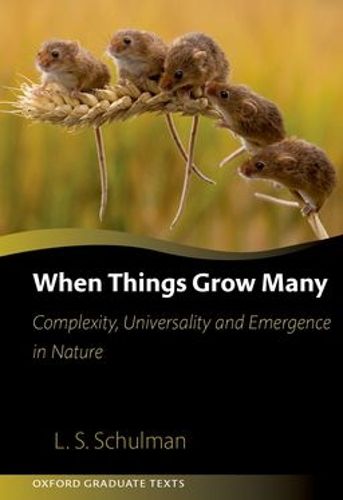Readings Newsletter
Become a Readings Member to make your shopping experience even easier.
Sign in or sign up for free!
You’re not far away from qualifying for FREE standard shipping within Australia
You’ve qualified for FREE standard shipping within Australia
The cart is loading…






Aimed at advanced undergraduates and graduate students, When Things Grow Many is an accessible and engaging textbook introducing the theory of statistical mechanics, as well as its fascinating real-world applications. The book's original approach, which covers interdisciplinary applications of statistical mechanics to a wide range of subjects, including chemistry, biology, linguistics, economics, sociology and more, is bound to appeal to a wide audience. While the first part of the book introduces the various methods of statistical physics, including complexity, emergence, universality, self-organized criticality, power laws and other timely topics, the final sections focus on specific relevance of these methods to the social, biological and physical sciences. The mathematical content is woven throughout the book in the form of equations, as well as further background and explanations being provided in footnotes and appendices.
$9.00 standard shipping within Australia
FREE standard shipping within Australia for orders over $100.00
Express & International shipping calculated at checkout
Stock availability can be subject to change without notice. We recommend calling the shop or contacting our online team to check availability of low stock items. Please see our Shopping Online page for more details.
Aimed at advanced undergraduates and graduate students, When Things Grow Many is an accessible and engaging textbook introducing the theory of statistical mechanics, as well as its fascinating real-world applications. The book's original approach, which covers interdisciplinary applications of statistical mechanics to a wide range of subjects, including chemistry, biology, linguistics, economics, sociology and more, is bound to appeal to a wide audience. While the first part of the book introduces the various methods of statistical physics, including complexity, emergence, universality, self-organized criticality, power laws and other timely topics, the final sections focus on specific relevance of these methods to the social, biological and physical sciences. The mathematical content is woven throughout the book in the form of equations, as well as further background and explanations being provided in footnotes and appendices.